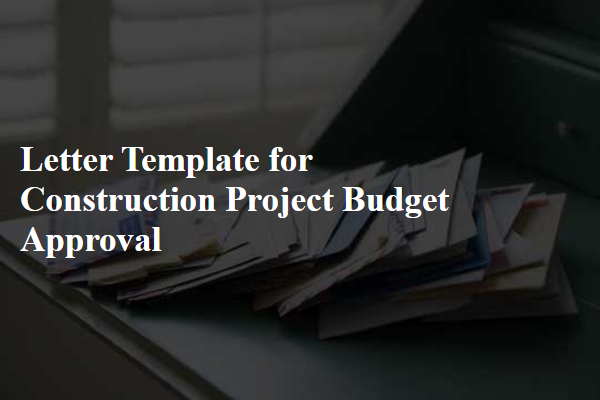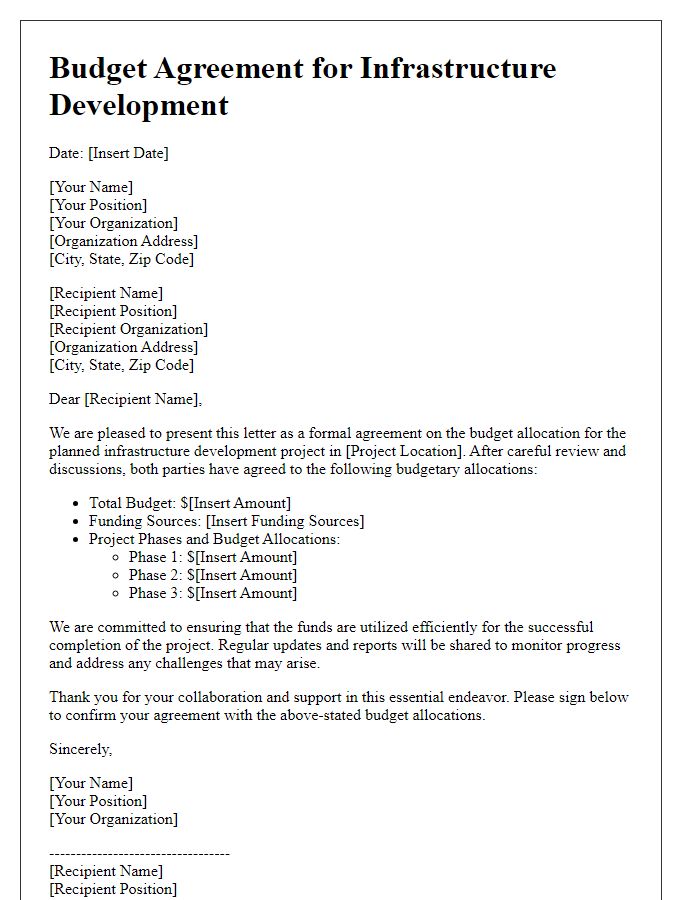Are you ready to ensure your construction project stays on track and within budget? Crafting a compelling letter for budget approval is crucial in communicating your project's financial needs effectively. Whether you're reaching out to stakeholders, clients, or investors, a well-structured letter can make a significant difference in securing the funds necessary for success. Let's dive deeper into how to create an impactful budget approval letter that gets results!

Project Overview Summary
A construction project budget approval summary highlights essential financial details required for project execution. The budget typically includes estimated costs for labor, materials, equipment, and overhead, ensuring that comprehensive planning occurs before the project begins. Key figures should reflect local market rates, with an emphasis on accuracy. For instance, labor costs may average $30 per hour based on regional factors in areas like Denver, Colorado, while materials such as concrete and steel are reported at current market prices fluctuating weekly. Any contingencies acknowledged should reflect 10-15% of the total budget to accommodate unforeseen expenses. A detailed breakdown ensures stakeholders understand allocation, promoting transparency and facilitating smoother financial approval processes.
Detailed Budget Breakdown
A well-structured construction project budget breakdown provides clarity for stakeholders regarding financial allocations. The initial phase, Site Preparation, is typically estimated at $15,000, encompassing land clearing, grading, and utility assessments. The foundation work, critical for structural integrity, may require approximately $50,000, incorporating concrete, rebar, and labor costs. Superstructure costs, including framing and roofing materials, could total about $120,000, with labor fees contributing significantly. MEP (Mechanical, Electrical, and Plumbing) installations, vital for building functionality, are projected at $80,000, including fixtures and wiring. Interior finishes, which can greatly enhance aesthetic appeal, may account for another $60,000, covering drywall, flooring, and painting. External site works like landscaping and driveways might reach $25,000. A contingency fund of around 10% of the total budget, or $35,000, is prudent to handle unforeseen expenses, totaling an estimated project budget of $450,000.
Justification and Benefits
A construction project budget approval can significantly impact the success of the endeavor, particularly regarding costs, timelines, and resource allocations. Comprehensive financial planning (utilizing tools like Microsoft Excel for cost estimation) is vital to ensure accurate forecasting, preventing budget overruns. Benefits include enhancing project viability, ensuring stakeholder confidence (involving investors, contractors, and community members), and aligning with industry standards (referencing guidelines from the Project Management Institute). Justifying expenditures through detailed breakdowns can illustrate anticipated returns on investment (ROI), projected cost savings, and long-term benefits, such as improved infrastructure durability and community satisfaction. Efficient budget approval processes can streamline decision-making, promote financial accountability, and ultimately lead to successful project completion.
Timeline and Milestones
The construction project timeline outlines key phases and milestones essential for successful budget approval. This includes the planning phase, scheduled to begin on January 5, 2024, and culminate with the completion of the foundational work by March 15, 2024. Significant milestones, such as the procurement of materials needed for framing (anticipated by February 1, 2024), ensure timely progress and adherence to budgetary constraints. The subsequent construction phase, stretching from March 16, 2024, to May 30, 2024, focuses on structural development and includes important checkpoints, such as inspections by local authorities on April 10 and May 15, 2024. Final completion of the project is targeted for June 30, 2024, aligning with the overall budget blueprint to ensure financial resources are allocated effectively throughout each stage.
Risk Assessment and Contingency Plans
In construction projects, risk assessment plays a crucial role in identifying potential hazards and mitigating impacts on timelines, quality, and budget. Common risks include project delays due to inclement weather (e.g., heavy rains exceeding 3 inches), supply chain disruptions affecting materials like steel or cement, and labor shortages (with fluctuations sometimes reaching 15% above normal). Contingency plans, which typically allocate 5-10% of the overall budget, provide financial flexibility to address unforeseen circumstances, ensuring project completion and stakeholder satisfaction. Identifying risks such as these in advance allows project managers to implement timely strategies for resource reallocation and maintain project integrity within the designated urban area, safeguarding both financial investment and timelines.













Comments